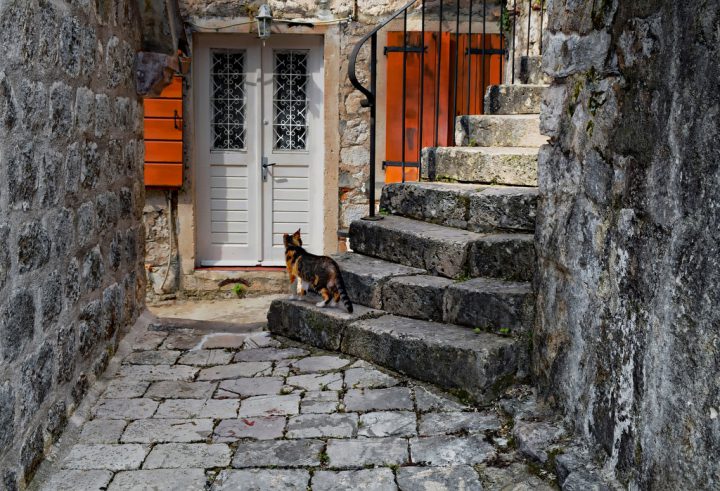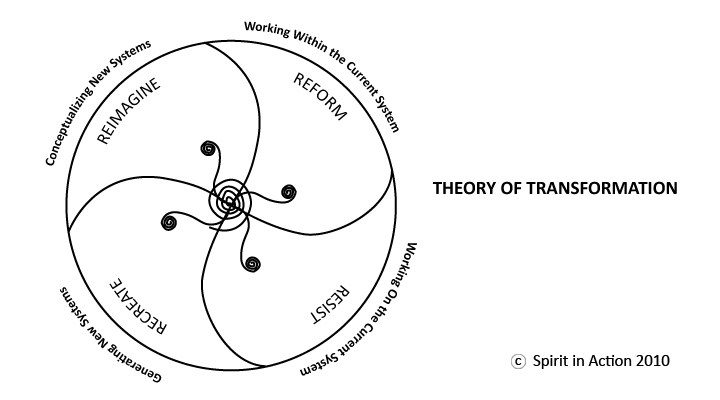Weaving Webs of Possibility: The Moral Imagination in Social Change
December 17, 2018 3 Comments
Image by Graylight, used under provisions of Creative Commons Attribution license 2.0.
As I was just starting work at IISC, back in 2005, our founding Executive Director Marianne Hughes, introduced the staff to the work of John Paul Lederach, and specifically his book The Moral Imagination. As I recall, she did this as a result of a sabbatical during which she explored the power of networks and of art in social change. These two things show up centrally in Lederach’s work. Lederach has spent years doing peace and reconciliation work in some of the most intense and entrenched conflicts in the world. And he writes not really as a master technician, but as a poet, which is very much by intention.
I thought of The Moral Imagination a couple of months ago, when I began to realize how starved many people I meet seem to be for alternatives to what we currently have as mainstream systems in this country. Many are speaking up against and resisting what is not working, has long been unjust, and is fundamentally sustainable, which is crucial. And in the absence of clear alternatives (see “reimagine” and “recreate” in Spirit in Action’s image below), what can ensue is … conflict. Entrenched conflict, with no creative point of release.
I also thought of Lederach’s book, because he writes how central networks, human webs, and authentic human connection is to the work of peacebuilding and reconciliation. Up until recently I had thought about peacebuilding as a field as having more to do with what goes on in “other places” like Ireland, Sudan, Colombia, Tajikistan. If nothing else, these past couple of years have provided a need to adjust that understanding – peacebuilding is needed at home.
So I’ve been scouring Lederach’s writings, and there is a lot that resonates. Lederach was recently featured on a powerful program of On Being with actress and activist America Ferrera (no doubt another reason he has been on my mind). There is much to say about The Moral Imagination, but for now I am offering some passages and quotes that struck a chord and I’m curious to hear what reactions those reading have …

Image by isghoul, “Birth/Death,” shared under provisions of Creative Commons attribution license 2.0.
“For those of us in the justice, peace and conflict professions, vocation calls us back to the road that winds beyond the rest stops of techniques and day-to-day practice. It beckons us to search for our deeper purpose and possibility, found more in who we are than what we do.”
“Birth is simultaneously pain and potential, the arriving of that which could be but is not yet.”
“Politics, economics and global structures have become so inauthentic that few of us truly believe in them. We live in the paradox – the things most omnipresent that govern our lives are the very things from which we feel distant.”
“Violence is the behavior of someone incapable of imagining other solutions to the problem at hand.”
– Vicenc Fisas

Photo by Jocelyn777, “Curiosity,” shared under provisions of Creative Commons attribution license 2.0.
“Time and again, where in small or larger ways the shackles of violence are broken, we find a singular tap root that gives life to the moral imagination: the capacity of individuals and communities to imagine themselves in a web of relationship even with their enemies.”
“Cycles of violence are often driven by tenacious requirements to reduce complex history into dualistic polarities that attempt to both describe and contain social reality in artificial ways… We are right. They are wrong. We were violated. They are violators. We are liberators. They are oppressors. Our intentions are good. Theirs are bad. History and the truth of history is most fully comprehended by our view. Their view of history is biased, incomplete, maliciously untruthful and ideologically driven. You are with us or against us.”
“To suspend judgment is not to relinquish opinion or the capacity to assess. It is fundamentally a force to mobilize the imagination and lift the relationships and understandings of relationships in a violent context to a new level.”
“Every totalitarian regime is frightened of the artist. It is the vocation of the prophet to keep alive the ministry of the imagination, to keep on conjuring and proposing futures alternative to the single one the king wants to urge as the only thinkable one.”
– Walter Brueggemann

Image by erix!, “Pessimism,” shared under provisions of Creative Commons attribution license 2.0.
“People living in settings of violence often give a warning: If the proposed changes lack a serious account of complexity or a long-term commitment, then the proposed changes are dangerous.”
“Pessimism suggests that the birth of constructive change develops in the womb of engaging complex historical relationships, not avoiding them.”
“The moral imagination believes and acts on the basis that the unexpected is possible. It operates with the view that the creative act is always within human potential, but creativity requires moving beyond the parameters of what is visible, what already exists, or what is taken as given.”
“The nature of things is grasped in pure intuition.”
-Kenneth Yasuda

Image by Bahadorjn, “Uprising,” shared under provisions of Creative Commons attribution license 2.0.
“You can have the perfect substantive solution to a problem, but if you do not have the right people in place and connected in the right way, the solution collapses.”
“Constructing social change is the art of seeing and building webs. The soul of sustaining change requires the craftsmanship of a spider. We must learn to be ‘smart flexible’ about web building.”
“A relationship-centric approach must see spaces of intersection, both those that exist and those that can be created. These are hubs, the heart that throbs the rhythm of change.”
“People are frightened of peace. It is simultaneously exciting and fearful. This is mystery. Peace asks a lot of you. Peace asks you to share memory. It asks you to share space, territory, specific concrete places. It asks you to share a future. … Peace is Mystery. It is walking into the unknown.”
– Cejka and Bamat

“Peace cannot be kept by force. It can only be achieved by understanding. – Albert Einstein,” image by CQ, shared under provisions of Creative Commons Attribution license 2.0.

3 Comments
That actually all started because I had spent a few days with him at the Association of Conflict Resolution’s conference, during which he announced and read a few paragraphs from The Moral Imagination, which was just coming out. He was also part of the Public and Intense Conflicts section – with Leah Wing, Frank Dukes and others – so I spent quite a bit of time with him in various configurations. I would also highly recommend the newer book he wrote with his daughter: When Blood and Bones Cry Out: Journeys through the Soundscape of Healing and Reconciliation, in which they talk about “social healing” – and how communities can recover and reconnect through making music, creating metaphors and telling stories – rather than through more typical linear approaches. You’d love it! Enjoy! And Happy Holidays!
Thanks, Linda. And I appreciate you filling out the story some more! I will definitely check out that book.
Thanks, Linda. And I appreciate you filling out the story some more! I will definitely check out that book.